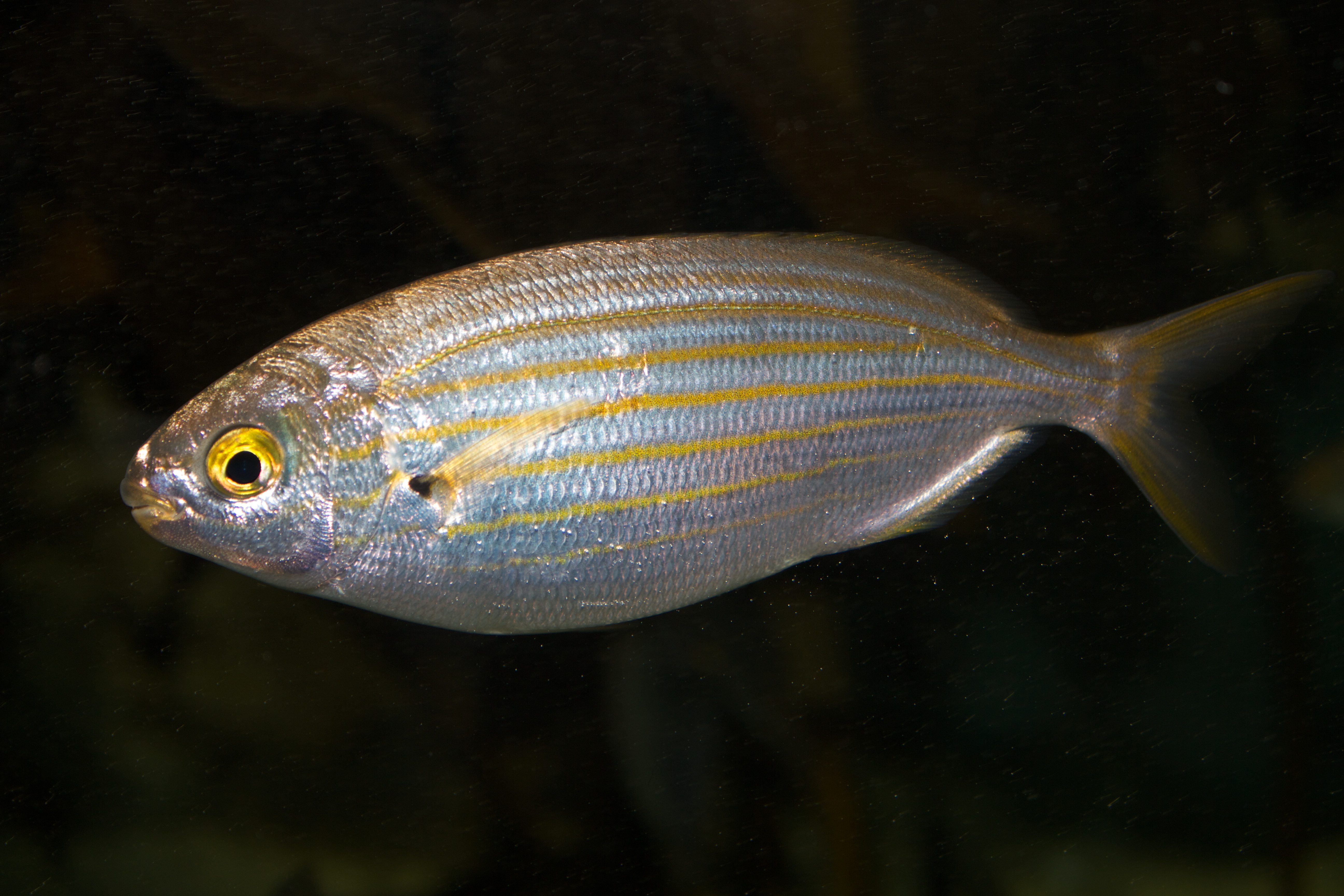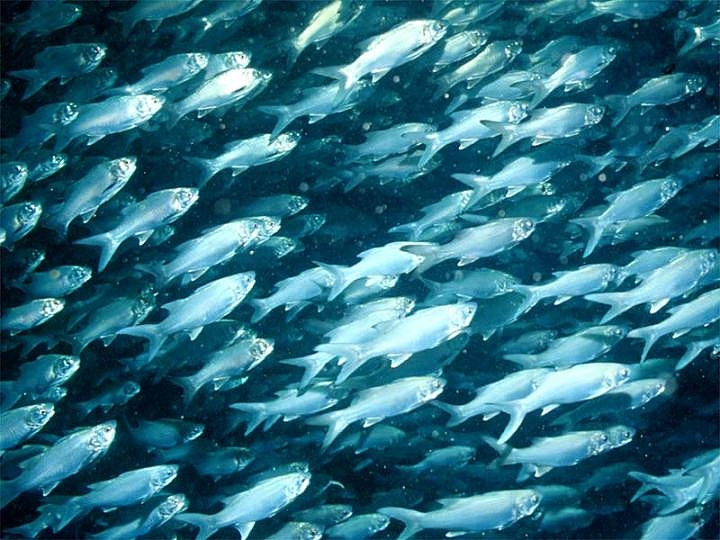|
Ichthyoallyeinotoxism
Ichthyoallyeinotoxism, or hallucinogenic fish inebriation, comes from eating certain species of fish found in several parts of the tropics, the effects of which are reputed to be similar in some aspects to LSD. Experiences may include vivid auditory and visual hallucinations. This has given rise to the collective common name "dream fish" for ichthyoallyeinotoxic fish. The species most commonly claimed to be capable of producing this kind of toxicity include several species from the genus '' Kyphosus'', including ''Kyphosus fuscus'', ''K. cinerascens'' and ''K. vaigiensis''. It is unclear whether the toxins are produced by the fish themselves or by marine algae in their diet, but a dietary origin may be more likely. '' Sarpa salpa'', a species of bream, can induce LSD-like hallucinations if it is eaten. These widely distributed coastal fish are called "the fish that make dreams" in Arabic. In 2006, two men who ate fish, apparently the '' Sarpa salpa'' caught in the Mediterran ... [...More Info...] [...Related Items...] OR: [Wikipedia] [Google] [Baidu] |
Hallucinogenic Fish
Several species of fish are claimed to produce hallucinogenic effects when consumed. For example, ''Sarpa salpa'', a species of sea bream, is commonly claimed to be hallucinogenic. These widely distributed coastal fish are normally found in the Mediterranean and around Spain, and along the west and south coasts of Africa. Occasionally they are found in British waters. They may induce hallucinogenic effects similar to LSD if eaten. However, based on the reports of exposure they are more likely to resemble hallucinogenic effects of deliriants than the effects of serotonergic psychedelics such as LSD. In 2006, two men who apparently ate the fish experienced hallucinations lasting for several days (an effect common with some naturally occurring deliriants). The likelihood of hallucinations depends on the season. ''Sarpa salpa'' is known as "the fish that makes dreams" in Arabic. Other species claimed to be capable of producing hallucinations include several species of sea chub f ... [...More Info...] [...Related Items...] OR: [Wikipedia] [Google] [Baidu] |
Sarpa Salpa
''Sarpa salpa'', known commonly as the dreamfish, salema, salema porgy, cow bream or goldline, is a species of sea bream, recognisable by the golden stripes that run down the length of its body, and which can cause ichthyoallyeinotoxism when eaten.Fish that triggers hallucinations found off British coast. ''The Daily Telegraph'' May 13, 2009. Accessed May 27, 2013. It is found in the East Atlantic, where it ranges from the to [...More Info...] [...Related Items...] OR: [Wikipedia] [Google] [Baidu] |
Kyphosinae
''Kyphosus'' is a genus of sea chubs native to the Atlantic, Indian and Pacific oceans. It is the only genus in the subfamily Kyphosinae of the family Kyphosidae. Species There are currently 16 recognized species in this genus: * '' Kyphosus analogus'' ( T. N. Gill, 1862) (Blue-bronze sea chub) * '' Kyphosus atlanticus'' K. Sakai & Nakabo, 2014 (Caribbean sea chub)Sakai, K. & Nakabo, T. (2014): Taxonomic review of ''Kyphosus'' (Pisces: Kyphosidae) in the Atlantic and Eastern Pacific Oceans. ''Ichthyological Research, 61 (3): 265-292.'' * '' Kyphosus azureus'' ( O. P. Jenkins & Evermann, 1889) (Zebra-perch sea chub) * '' Kyphosus bigibbus'' Lacépède, 1801 (Brown chub) * '' Kyphosus bosquii'' (Lacépède, 1802) (Bermuda sea chub) * '' Kyphosus cinerascens'' ( Forsskål, 1775) (Blue sea chub) * '' Kyphosus cornelii'' ( Whitley, 1944) (Western buffalo bream) * '' Kyphosus elegans'' ( W. K. H. Peters, 1869) (Cortez sea chub) * '' Kyphosus gladius'' Knudsen & Clements, 2013 ... [...More Info...] [...Related Items...] OR: [Wikipedia] [Google] [Baidu] |
Bream
Bream ( ) are species of freshwater and marine fish belonging to a variety of genera including ''Abramis'' (e.g., ''A. brama'', the common bream), ''Acanthopagrus'', '' Argyrops'', ''Blicca'', '' Brama'', ''Chilotilapia'', '' Etelis'', ''Lepomis'', ''Gymnocranius'', '' Lethrinus'', ''Nemipterus'', ''Pharyngochromis'', ''Rhabdosargus'', ''Scolopsis'', or ''Serranochromis''. Although species from all of these genera are called "bream", the term does not imply a degree of relatedness between them. Fish termed "bream" tend to be narrow, deep-bodied species. The name is a derivation of the Middle English word ''breme'', of Old French origin. The term sea bream is sometimes used for gilt-head bream (''Sparus aurata''), (''orata'' in Italy, ''dorada'' in Spain) or porgies (both family Sparidae) or pomfrets (family Bramidae) . See also * Porgie fishing * Bluegill The bluegill (''Lepomis macrochirus''), sometimes referred to as "bream", "brim", "sunny", or "copper nose" as is c ... [...More Info...] [...Related Items...] OR: [Wikipedia] [Google] [Baidu] |
Mahalo
"Mahalo" is a Hawaiian word meaning thanks, gratitude, admiration, praise, esteem, regards, or respects. According to the Pukui and Elbert Hawaiian Dictionary, it is derived from the Proto-Polynesian ''*masalo.'' Some sources support that the meanings "thanks" and "gratitude" were appended to the word following contact with Westerners. While the word ''mahalo'' is found in Lorrin Andrews' 1865 dictionary, the English-Hawaiian section does not provide any Hawaiian word intended to mean gratitude or thanks. Also, early visitors noted that the Hawaiians were generous and grateful people, but had no word to express gratitude or to say "thank you". See also *Aloha ''Aloha'' ( , ) is the Hawaiian language, Hawaiian word for love, affection, peace, compassion and mercy, that is commonly used as a simple greeting but has a deeper cultural and spiritual significance to native Hawaiians, for whom the term is u ... References Hawaiian words and phrases Hawaiiana fr:Mahalo it:Ma ... [...More Info...] [...Related Items...] OR: [Wikipedia] [Google] [Baidu] |
Coastal Fish
Coastal fish, also called inshore fish or neritic fish, inhabit the sea between the shoreline and the edge of the continental shelf. Since the continental shelf is usually less than deep, it follows that pelagic coastal fish are generally epipelagic fish, inhabiting the sunlit epipelagic zone.Moyle and Cech, 2004, page 585 Coastal fish can be contrasted with ''oceanic fish'' or ''offshore fish'', which inhabit the deep seas beyond the continental shelves. Coastal fish are the most abundant in the world. They can be found in tidal pools, fjords and estuaries, near sandy shores and rocky coastlines, around coral reefs and on or above the continental shelf. Coastal fish include forage fish and the predator fish that feed on them. Forage fish thrive in inshore waters where high productivity results from upwelling and shoreline run off of nutrients. Some are partial residents that spawn in streams, estuaries and bays, but most complete their life cycles in the zone.Moyle and Cech, ... [...More Info...] [...Related Items...] OR: [Wikipedia] [Google] [Baidu] |
Arabic
Arabic (, ' ; , ' or ) is a Semitic languages, Semitic language spoken primarily across the Arab world.Semitic languages: an international handbook / edited by Stefan Weninger; in collaboration with Geoffrey Khan, Michael P. Streck, Janet C. E.Watson; Walter de Gruyter GmbH & Co. KG, Berlin/Boston, 2011. Having emerged in the 1st century, it is named after the Arabs, Arab people; the term "Arab" was initially used to describe those living in the Arabian Peninsula, as perceived by geographers from ancient Greece. Since the 7th century, Arabic has been characterized by diglossia, with an opposition between a standard Prestige (sociolinguistics), prestige language—i.e., Literary Arabic: Modern Standard Arabic (MSA) or Classical Arabic—and diverse vernacular varieties, which serve as First language, mother tongues. Colloquial dialects vary significantly from MSA, impeding mutual intelligibility. MSA is only acquired through formal education and is not spoken natively. It is ... [...More Info...] [...Related Items...] OR: [Wikipedia] [Google] [Baidu] |
Siganus Spinus
''Siganus spinus'', the little spinefoot, scribbled rabbitfish, blunt-nosed spinefoot, spiny rabbitfish or spiny spinefoot, is a species of marine ray-finned fish, a rabbitfish belonging to the family Siganidae. It is found in the Indo-Pacific region. Taxonomy ''Siganus spinus'' was first formally described in 1758 as ''Sparus spinus'' by Carl Linnaeus in the 10th edition of the ''Systema Naturae'' with the type locality given as Java. The specific name ''spinis'' means "thorn" or "spine" which. as the only spine Linnaeus mentioned in his description was the forward pointing in front of the dorsal fin, is presumably a reference to that spine, however, it could also be a reference to the robust and venom-bearing spines on the dorsal, anal and pelvic fins. Description ''Siganus spinus'' has a laterally compressed, deep and relatively slender body which has a depth which fits into its standard length 2.3 to 2.8 times. The dorsal profile of the head is indented above eye, the snout ... [...More Info...] [...Related Items...] OR: [Wikipedia] [Google] [Baidu] |
Reunion Island
Reunion may refer to: * Class reunion * Family reunion Reunion, Réunion, Re-union, Reunions or The Reunion may also refer to: Places * Réunion, a French overseas department and island in the Indian Ocean * Reunion, Commerce City, Colorado, US * Reunion, Florida, a resort neighborhood near Orlando, Florida, US * Holy Empire of Reunion, a Brazilian micronation that claims the French island as its territory * Reunion District, Dallas, US Architecture * Reunion Arena, an indoor arena in Dallas, Texas, US * Reunion Tower Reunion Tower is a observation tower in Dallas, Texas and one of the city's most recognizable landmarks. Located at 300 Reunion Boulevard in the Reunion district of downtown Dallas, the tower is part of the Hyatt Regency Hotel complex and is the ..., a building in Dallas, Texas, US Arts and entertainment Books * ''Reunion'' (Uhlman novel), a 1971 German language novel by Fred Uhlman * ''Reunion'' (Foster novel), a 2001 science fiction novel by Alan Dean Fo ... [...More Info...] [...Related Items...] OR: [Wikipedia] [Google] [Baidu] |
Hawaii
Hawaii ( ; haw, Hawaii or ) is a state in the Western United States, located in the Pacific Ocean about from the U.S. mainland. It is the only U.S. state outside North America, the only state that is an archipelago, and the only state geographically located within the tropics. Hawaii comprises nearly the entire Hawaiian archipelago, 137 volcanic islands spanning that are physiographically and ethnologically part of the Polynesian subregion of Oceania. The state's ocean coastline is consequently the fourth-longest in the U.S., at about . The eight main islands, from northwest to southeast, are Niihau, Kauai, Oahu, Molokai, Lānai, Kahoolawe, Maui, and Hawaii—the last of these, after which the state is named, is often called the "Big Island" or "Hawaii Island" to avoid confusion with the state or archipelago. The uninhabited Northwestern Hawaiian Islands make up most of the Papahānaumokuākea Marine National Monument, the United States' largest protected ... [...More Info...] [...Related Items...] OR: [Wikipedia] [Google] [Baidu] |
5-Bromo-DMT
5-Bromo-DMT (5-bromo-''N'',''N''-dimethyltryptamine) is a psychedelic brominated indole alkaloid found in the sponges ''Smenospongia aurea'' and ''Smenospongia echina'', as well as in ''Verongula rigida'' (0.00142% dry weight) alongside 5,6-Dibromo-DMT (0.35% dry weight) and seven other alkaloids. It is the 5- bromo derivative of DMT, a psychedelic found in many plants and animals. 5-Bromo-DMT has a pEC50 value of 5.51 for the 5-HT2A receptor. Animal studies on 5-Bromo-DMT showed that it produces effects suggestive of sedative and antidepressant activity and caused significant reduction of locomotor activity in the rodent FST model. 5-Bromo-DMT was reported to be psychoactive at 20–50 mg via vaporization with mild psychedelic-like activity. Legality 5-Bromo-DMT is specifically listed as a controlled drug in Singapore. Related compounds * 5-Chloro-αMT * 5-Fluoro-AMT * 5-Fluoro-DMT * Convolutindole A * Desformylflustrabromine * Plakohypaphorine Plakohypaphorines a ... [...More Info...] [...Related Items...] OR: [Wikipedia] [Google] [Baidu] |




